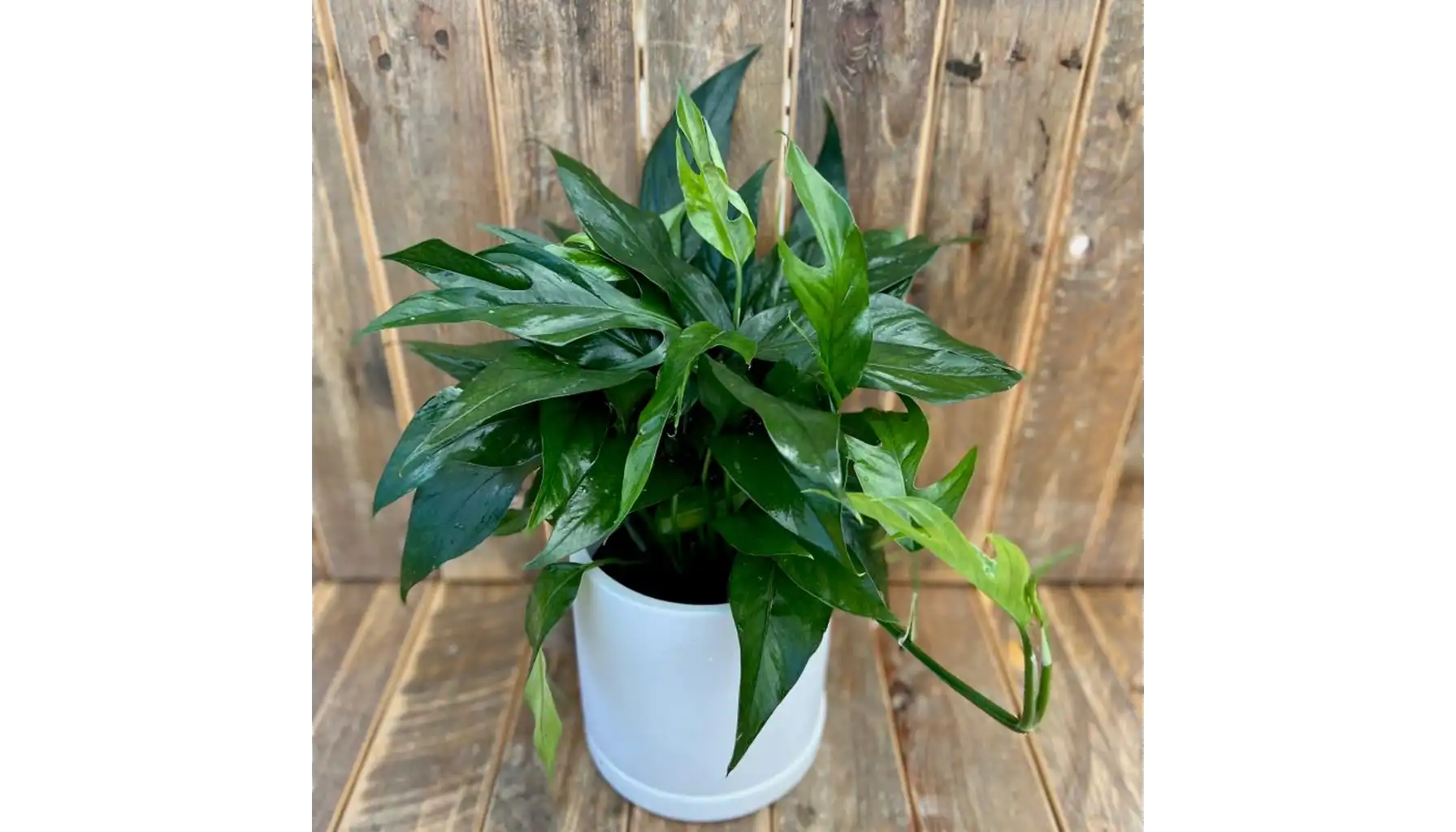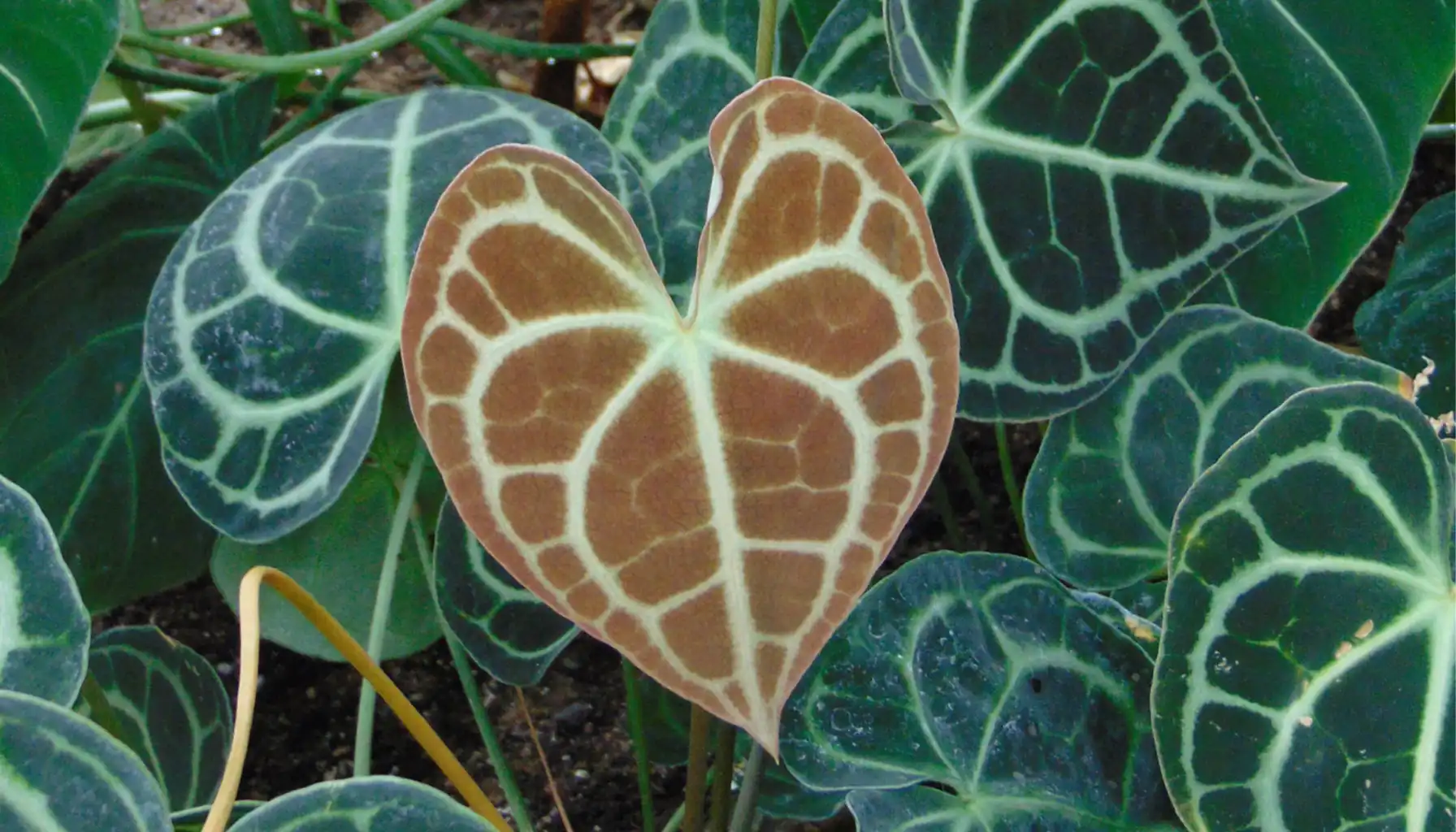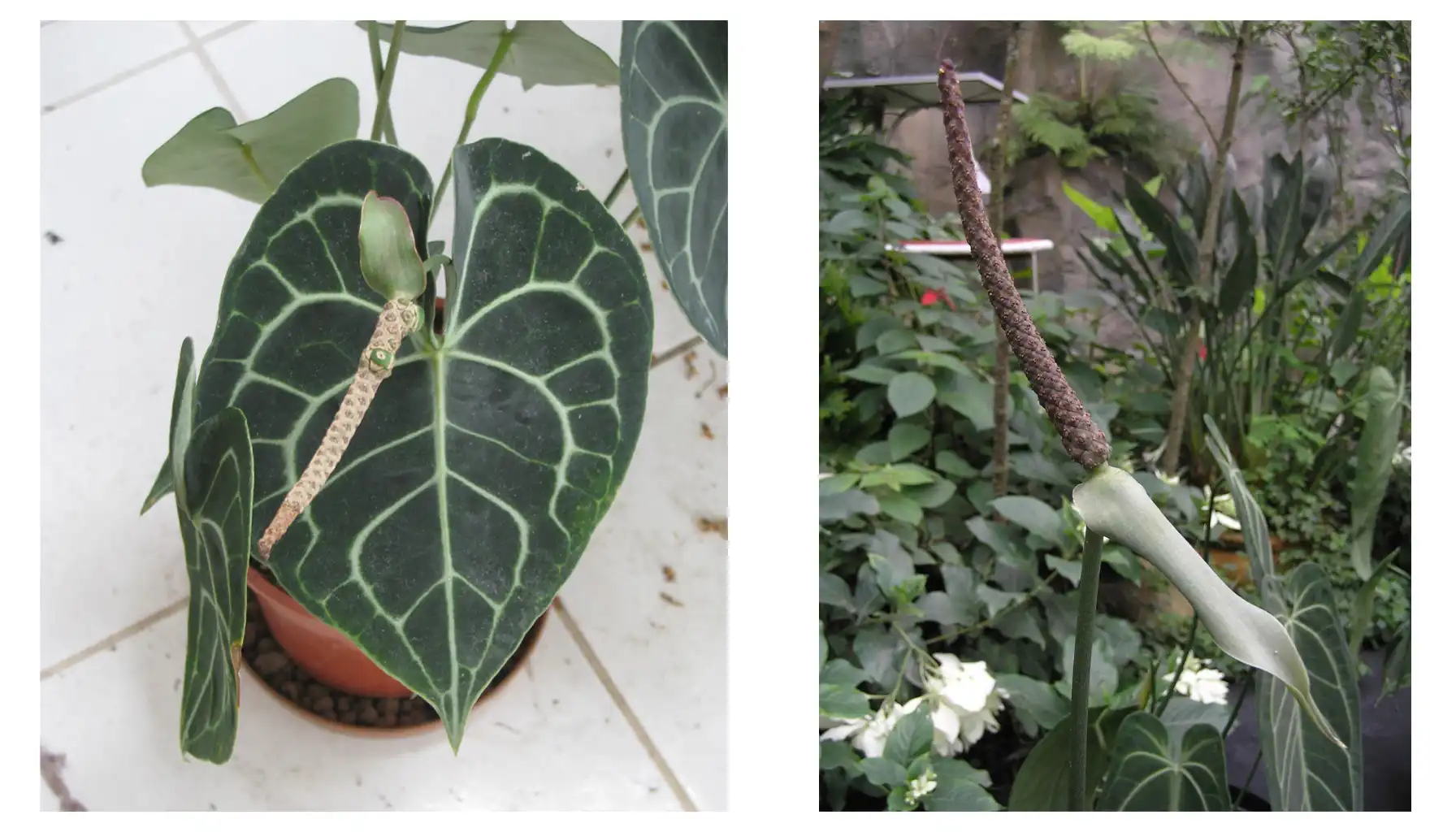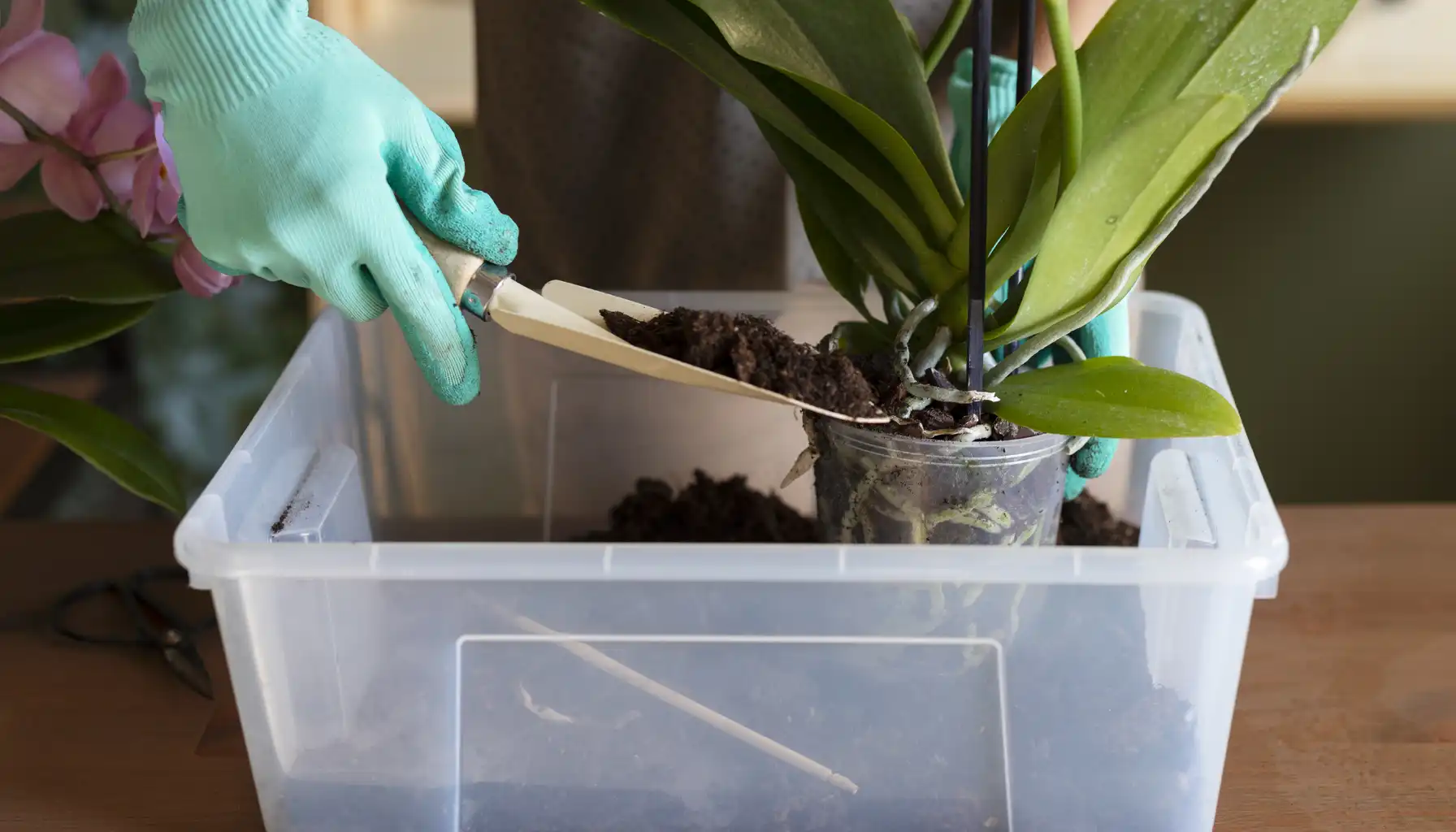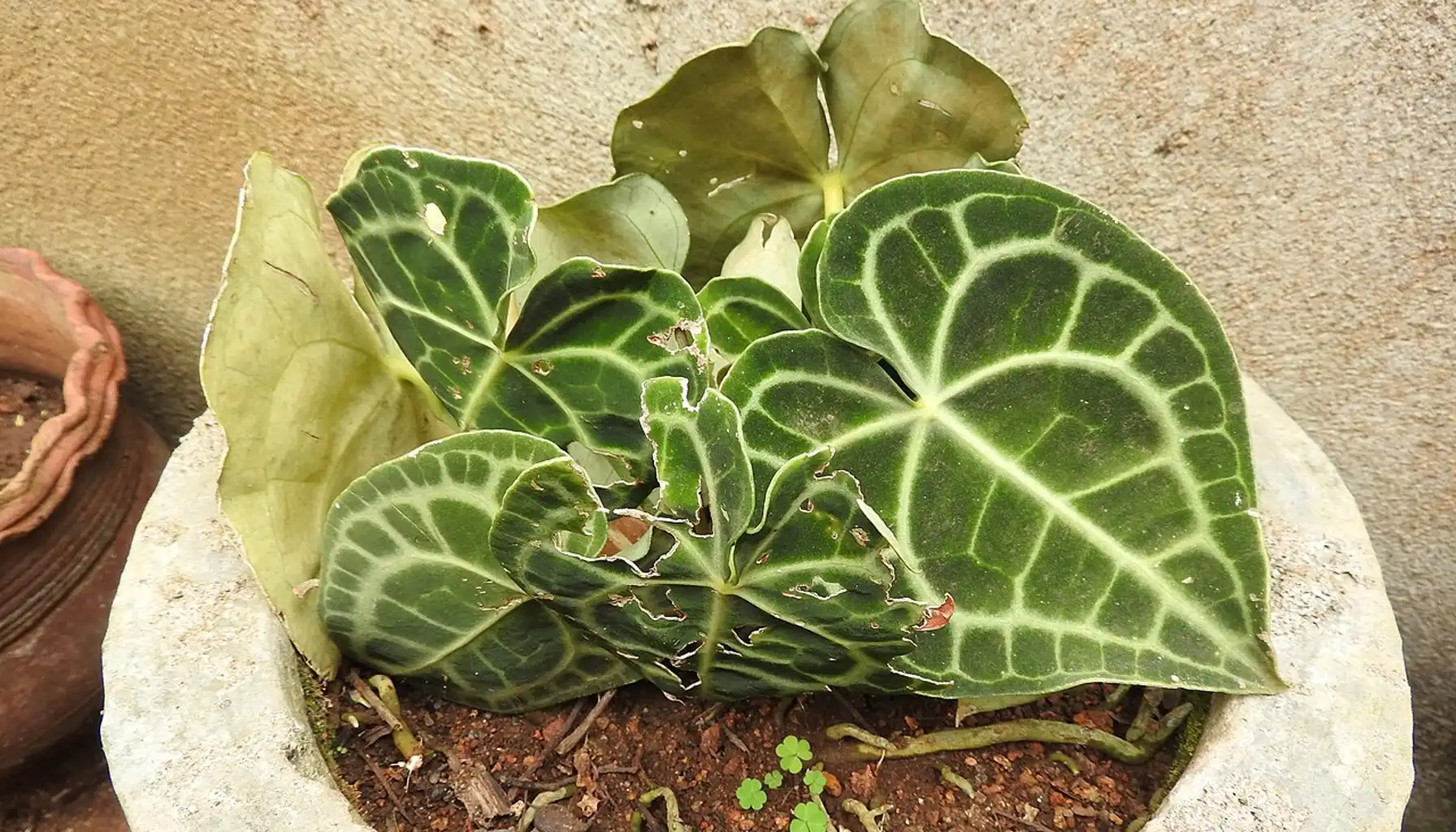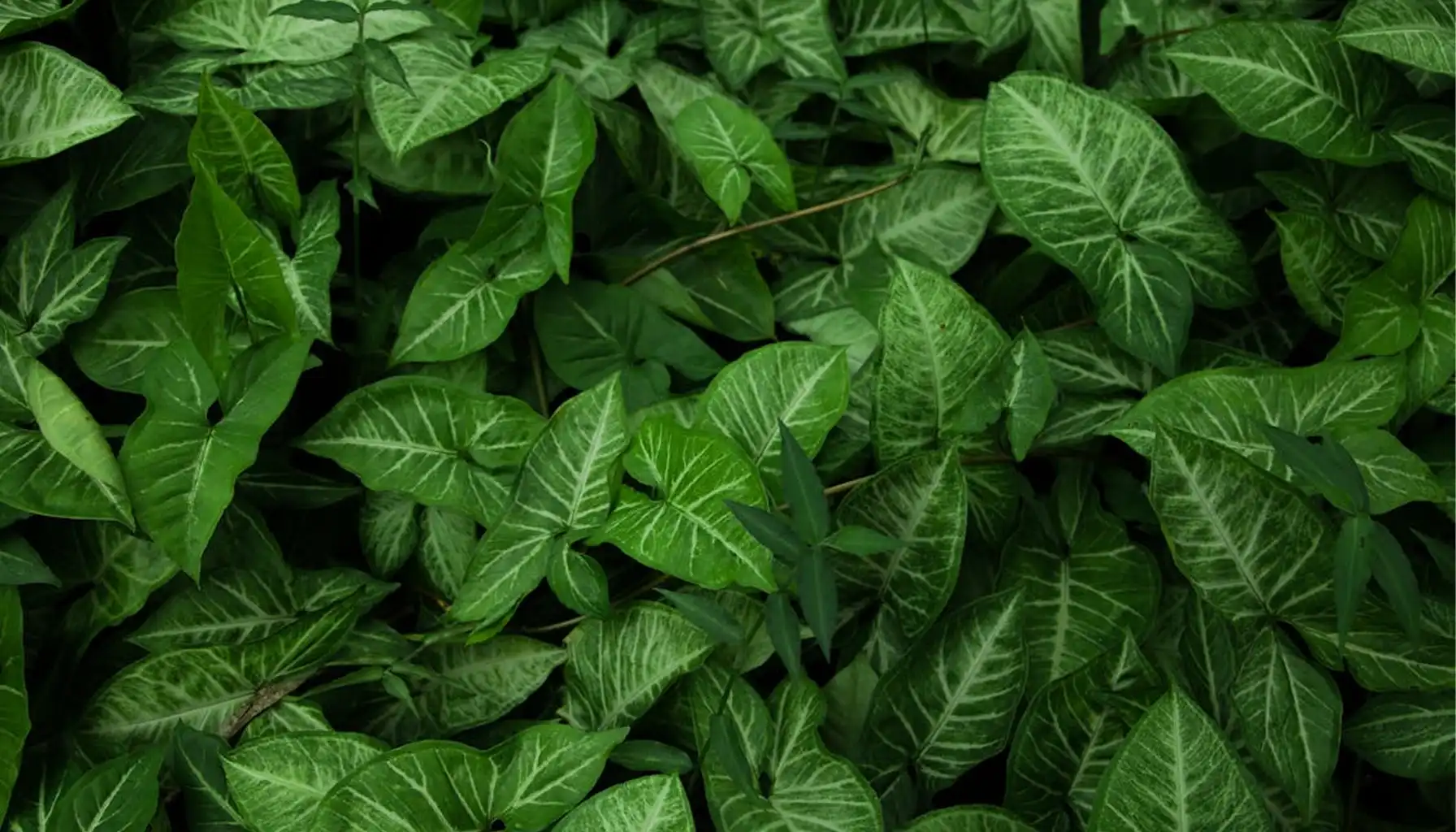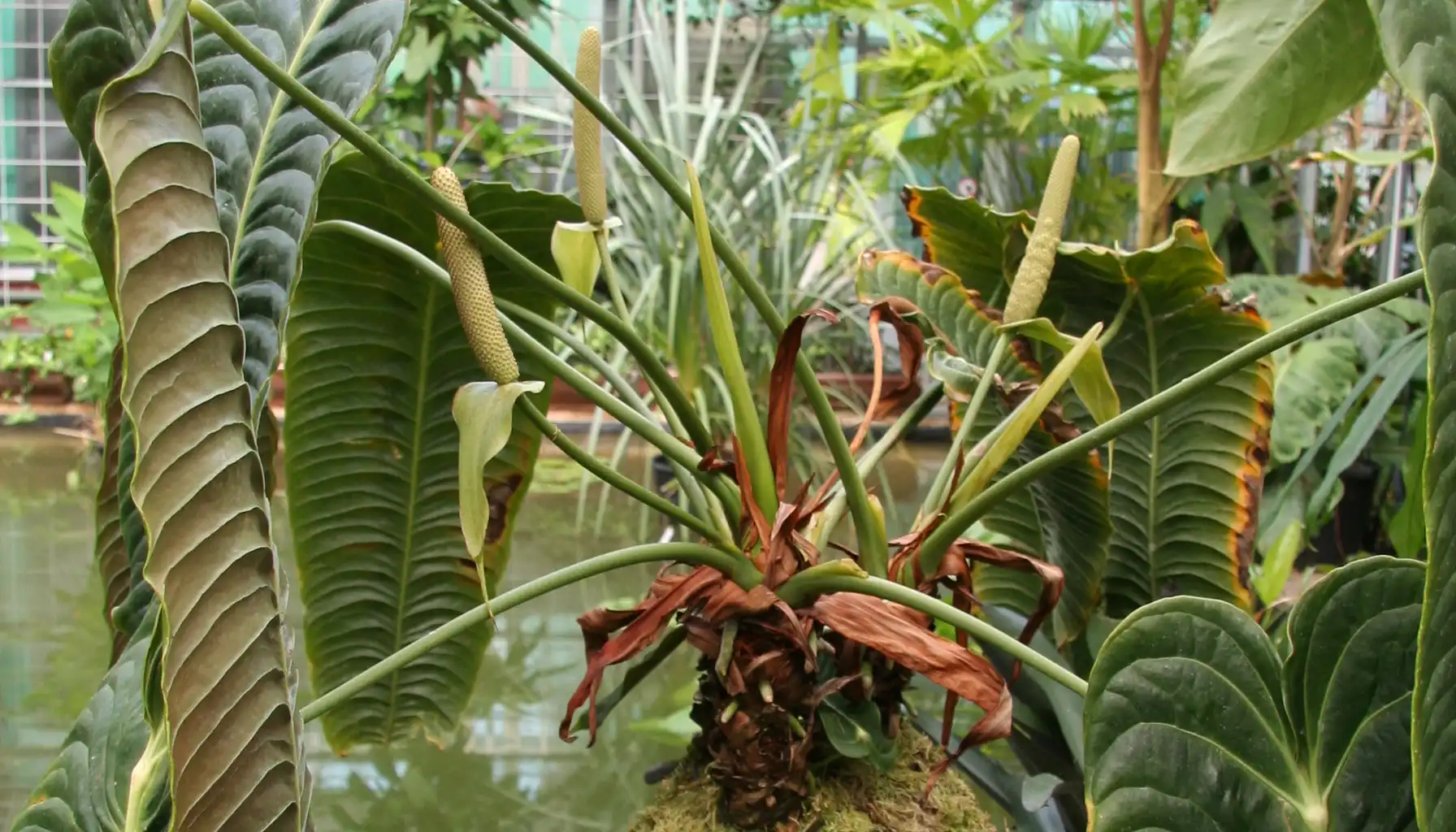The Anthurium Clarinervium has special leaves that feel like soft velvet and have very bright white lines on the dark green surface.
This plant comes from South Mexico, where it often grows on trees or rocks, so it needs a special kind of care.
Therefore, if you are in the middle of your journey and are not sure that you are doing everything right, then use the plant identification app to avoid individual problems.
Feature | What it is | Details and Special Things |
Leaf Shape | Heart shape | The leaves are thick and hard, and they have a soft velvet feeling |
Adult Size | 25 cm | The Anthurium Clarinervium large leaf can be 30 cm long |
Best Water in Air | 65%−80% | Low humidity in the air makes the leaf edges dry and yellow, and small bugs can come |
Watering | Not often | You must give water only when 2/3 of the soil is very dry |
Soil | Must have a lot of air | You must use big pieces of wood, white stones, and coconut chips, and not much soft dirt, because the roots need to breathe |
Speed of Growth | Normal speed | Anthurium Clarinervium new leaf comes out about every 6-8 weeks. |
Flower | Not pretty | The Anthurium Clarinervium bloom is green, and most people cut it off, so it can use the energy to make bigger leaves instead |
The Leaf Shape and Plant Life
The most special thing about the A. clarinervium is its leaves, which have a heart shape and are very thick and strong, and they have a soft velvet surface that makes the light go away.
So the leaf looks deep, dark green, and the whole Anthurium Clarinervium leaf has thick, very bright white or silver lines.
How the Plant Grows and How Big It Gets
It grows up to become a mature Anthurium Clarinervium, which takes a long time and needs you to be patient, because the Anthurium Clarinervium growth rate is only normal.
The Anthurium Clarinervium large and adult examples can become quite big, because the leaf can be 15 to 25 centimeters long, and sometimes even 30 cm long.
Special Kinds of the Plant
Anthurium Clarinervium dark form: This name is used for plants that have a very, very dark green color, almost black, on the leaf, and because the leaf is so dark, the silver lines look much brighter, so these ones are more wanted by people who collect plants, but it is not a different kind of plant, only a special color.
Anthurium king clarinervium / Anthurium queen of clarinervium: These names are usually just store names for houseplants that are very big and strong, or they can be Anthurium Clarinervium hybrid ones.
How to Care for the Plant
Water and Air
Anthurium Clarinervium humidity: It needs the air to be very wet, mostly from 65% to 80%, and if the air is not wet enough (less than 60%) the sides of the leaves will become dry and twisted.
Anthurium Clarinervium watering: You should give the Anthurium Clarinervium water only when the top part of the soil is dry, and it is better to wait until two-thirds of the soil is dry, and in the cold months you must give less water.
Support and Flowers
Anthurium Clarinervium moss pole: Even though A. clarinervium does not climb much like other Anthuriums, it uses rocks and trees to hold itself up, so using a moss pole or a big piece of tree bark can help the Anthurium Clarinervium plant stay strong and make bigger leaves, because the air roots will get more water from the moss.
Anthurium Clarinervium bloom: The flower is not pretty, as it is just green or brown, so most people cut the Anthurium Clarinervium flower off, because this helps the plant save its power to make the leaves bigger.
Making New Plants, Rare Types, and How Much They Cost
Making New Plants
The Anthurium Clarinervium propagation can be done in a few ways:
Cutting the Plant: This is the surest way and you cut off the small baby ones that grow on the side of the mature Anthurium Clarinervium.
Stem Pieces: If it has a long stem, you can cut it into small pieces that have roots and nodes, and you plant them in wet moss or white stones.
Seeds: This takes a very long time and special clean places, and it is mostly used to make new Anthurium Clarinervium seedling ones.
Rare Colors and Mixed Plants
Anthurium Clarinervium variegated: The plants, which have white, yellow, or light green colors on the dark leaf, are very hard to find and the Anthurium Clarinervium for sale costs a lot of money, because they grow slower and need more light — the white parts have no green color to help them grow.
Anthurium Clarinervium hybrid: This plant is often mixed with other types, like A. crystallinum, and these are often easier to care for in a house, because they take the best parts from both parent plants.
How Much They Cost
The Anthurium Clarinervium price is different because of a few things:
Size and Age: A small seedling or baby ones costs much less than a large or Anthurium Clarinervium mature plant with many big leaves.
Color: The variegated plants are the most expensive, and the dark form plants also cost more money than the normal green ones.
Safety and Full Care
Safety for Pets
The Anthurium Clarinervium toxic to cats rule is important, because it is bad for cats, dogs, and people if they eat it, and it has small crystals inside that cause strong pain and swelling in the mouth and throat, so you must keep the plant high up where your pets cannot reach it, and if you think your pet ate it, you need to go to the animal doctor very fast.
Full Care
The Anthurium Clarinervium entretien means you must look at the plant and clean it often:
Cleaning: The velvet leaf gets dust easily, so you must use a soft brush or a little wet cloth to clean it slowly, and you should never use shiny products on the leaves.
Light: It needs bright light that is not direct sun, and if it does not get enough light, the growth rate is very slow and the leaves look pale.
New Pot: You should only put it in a new pot when the roots are completely filling the old pot, which is about once every one or two years.
Problems and How to Fix Them
Root Rot
If you give the plant too much water and the water stays in the soil for many days, the roots can become soft and black, which is a big problem, because the roots cannot take water and food anymore, and then the whole plant will die quickly.
So to fix this you must take the plant out of the wet soil and cut off the bad roots that are soft and black, and then you must put the plant in new, dry, very airy soil.
Anyway, it's better to double-check and take the picture of the problem and upload it to AI Plant Finder to get personalized recommendations.
Yellow or Dry Leaves
When the plant is old, it can lose a leaf, and this leaf will become yellow or brown and die, but if many leaves become yellow fast, it means you gave too much water, or the plant is too cold, or it did not get enough food for a long time, and if the sides of the leaves are dry and brown, it means the air is not wet enough.
Small Bugs
Small bugs like the spider mite like to live on the leaves when the air is too dry, and these bugs make tiny white webs under the leaf, so the leaf looks bad and starts to lose its color, and if you see these bugs, you must clean the leaves with a soft cloth and a little soap, and you must make the air wetter right away and keep it wet.
How to Buy and Sell Your Anthurium Clarinervium
When you want to buy and sell, you must remember these important rules:
Buying Check: Always look at the roots — they should be strong and light brown, not black/soft
Humidity Question: Ask the seller if the plant grew in very high air moisture, because this can cause problems in a drier home
Pricing Rules: Mature ones cost more than seedlings, and variegated types cost the most money because they are rare
Selling Photo: Take clear photos of the leaf to show the velvet and the silver lines well
Shipping: Wrap the large, fragile leaves very safely and use a strong box so they do not break during the trip.
Related AI Plant Finder Posts
